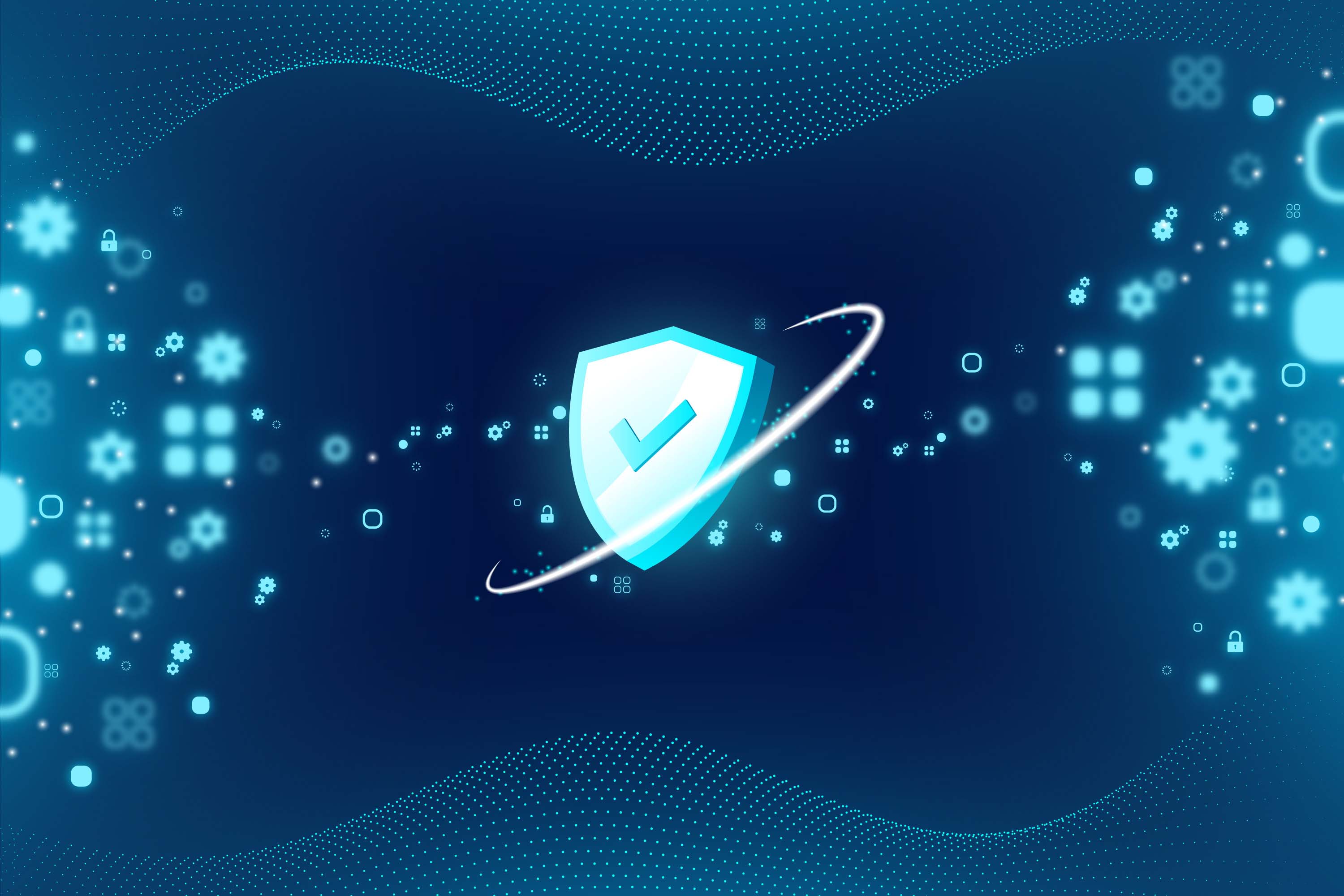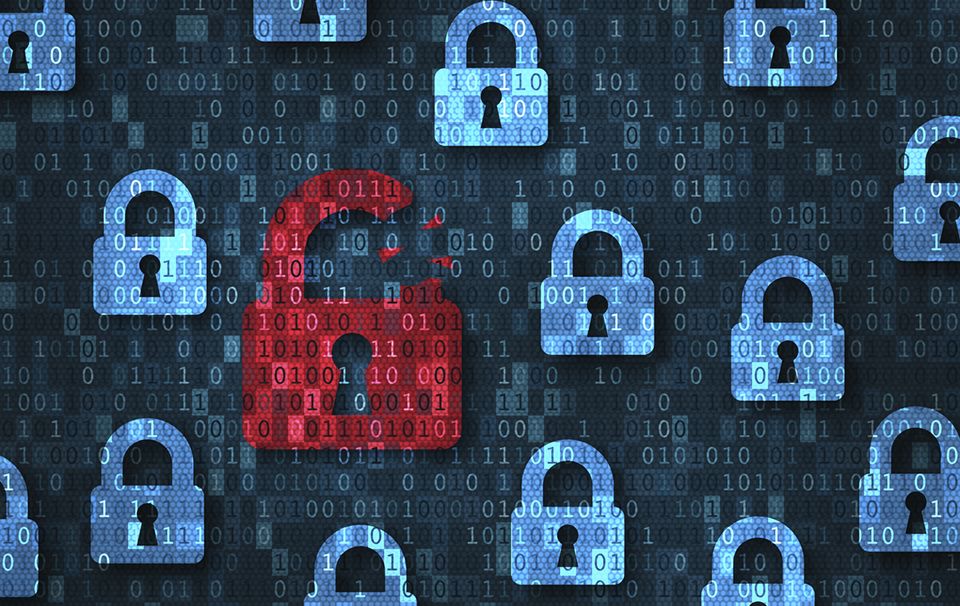
por Rebeca | Oct 26, 2022 | Ciberseguridad
Every company must face the new cybersecurity challenges and for this there is a new approach. «Developing a fully integrated strategic approach to cyber risk is fundamental to manufacturing value chains as they align with the operational technology (OT) and IT environments—the driving force behind Industry 4.0«, Deloitte said recently.
With the advent of Industry 4.0, threat vectors are expanding. That is why new risks must be considered and addressed. The main objective will be to implement a safe, vigilant and resilient cyber risk strategy. When supply chains, factories, customers, and operations are connected, the risks of cyber threats increase. The risks are enhanced and have a greater scope, he added.
Adopting new approaches and challenging conventional thinking is essential in an increasingly digitized world. “In terms of security, if we’re not moving forwards and developing, then we are effectively going backwards because our adversaries will definitely be moving forward,” commented Johnson (partnerships and outreach manager (digital and STEM), founder and director of Women in Cyber Wales)
Technology change has been beneficial to both organizations and its employees. The adoption of technological innovations by organizations has skyrocketed in recent decades. increase global spending on technology across all industries.
The adoption of new technologies brings many benefits to the company. At the same time it comes with risks and free threats. The new technology must fit perfectly into the business. If the right fit is not ensured the sustenance will be at large risk.
The adoption of new technologies to overcome cybersecurity challenges
New technology while adopting create internal conflict in an organization. They are such as managerial, Technological, sociological and economic related. There are several attributes of conflicts and they are usability, interoperability, common business views, agility, scalability, reliability, openness, manageability, infrastructure and security. Here Security assumes major role.
With data breaches continuing to pose a threat to any emerging technology, it’s critical to think about a good investment in cybersecurity. The increase in technology exists in any type of business, from health care, finance, manufacturing, services or any other. In order for these companies to be able to exploit them efficiently and prosper, they must put into practice cybersecurity policies and practices.
It is necessary to adequately analyze the security risks of the technology that will be implemented. In addition, before institutionalizing technologies, effective strategies must be implemented.
Why Security Standards Are Important
Conformance with established standards and best practices is essential for increasing the protection baseline in cybersecurity. Many organisations lack personnel experienced in the domain and, therefore, have a hard time adopting new approaches and techniques. Education is an important component, but in-depth knowledge is hard to transfer.
Thus, certification methodologies that distil certain best practices into structured, easy-to-apply guidelines have an important role in the proliferation of cybersecurity innovation.
The Evolution of Threat Hunting
Threat hunting continues to evolve for organizations that focus on proactively detecting and isolating Advanced Persistent Threats (APTs) that might otherwise go undetected by traditional, reactive security technologies.
While many SOCs are struggling to cope with the current security threat workload, more organizations are adopting threat hunting as part of their security operations. They are discovering that proactive threat hunting can reduce the risk and impact of threats while improving defenses against new attacks.
Source:
(1) cyber-security.com
(2) cio.com
(3) Deloitte.com
(4) cybersec4europe.eu
Picture: Vector de Fondo creado por pikisuperstar – www.freepik.es

por Rebeca | Ago 10, 2022 | Ciberseguridad, Noticias
Digital technologies make it easier and more efficient to deliver patient care and provide better outcomes. However, the rise of digital technologies and the growing interconnectedness between different healthcare systems come with increasing healthcare cybersecurity threats.
Weak cybersecurity measures expose companies to serious risk. Victim companies suffer operationally, as systems are rendered unusable. In addition, it affects your reputation, because customers lose trust. And, since the regulators are strict, they end up legally affected, too.
The healthcare industry is particularly vulnerable because it uses extremely sensitive data. For example, pharmaceutical companies store proprietary scientific data and intellectual property. Medical device companies develop systems that interface such devices with physician, patient, and medical entity data collection.
Additionally, operational functions are often literally matters of life and death. Breaches in healthcare and pharma cost more than those in almost any other industry.
After Covid-19, healthcare cybersecurity risk is higher than ever
Cyberattacks grabbed headlines throughout 2021 as hacking and IT incidents affected government agencies, major companies, and even supply chains for essential goods, like gasoline. For healthcare, this year was even more turbulent as cybercriminals took advantage of hospitals and healthcare systems responding to the Covid-19 pandemic.
More than one health care provider was forced to cancel surgeries, radiology exams, and other services, because their systems, software, and/or networks had been disabled
The COVID-19 crisis will continue to test the resiliency of the global healthcare industry.
What can healthcare organizations do to address the challenges?
Strategies include the following:
- Implementing cybersecurity technology
- Building a talent pool of professionals skilled in healthcare cybersecurity. Do you know about cybersecurity skills?
- Developing a healthcare cybersecurity strategy focused on patient privacy protection
- Addressing vulnerabilities in legacy systems in healthcare
- Keeping tabs of new developments to understand information technology (IT) challenges
By introducing cybersecurity as a value proposition and formulating clear action plans, healthcare organizations can meet cybercriminals fully armed — and give them a worthy response. See how Soffid can help you stay ahead of the curve in a rapidly evolving digital world. Let’s talk!
Sources:
(1) Security Magazine
(2) Contentsecurity.com
(3) Infosecuritymagazine
(4) Forbes
Imagen:Foto de doctor feliz creado por pressfoto – www.freepik.es

por Rebeca | Dic 15, 2021 | Ciberseguridad, Recursos

secure single sign-on solution
The sheer number of tasks we do online grows every year as we create and discover new opportunities to digitize our world. This is true within the workplace as well, but as we find more processes to automate using cloud-based technology and new apps to improve efficiency, we add more risk to the organization. Each tool added to the technology toolbelt, each interface users enter a password on, each app that we connect to via different networks and devices — they all add to our existing attack surface and present bad actors with seemingly unlimited avenues to cause harm if left unchecked.
This is where a secure single sign-on solution comes into play — using one reinforced set of credentials to access all of these tools and resources provides quite a few different benefits to modern organizations. SSO reduces the number of attack vectors your organization has, and SSO layered with multi-factor authentication (MFA) creates useful security and compliance controls. So, how do you find a solution that provides these capabilities and more? The answer is simple — look for an integrated, holistic directory platform that focuses on security and productivity.
Implementing an integrated directory solution provides organizations with a single source of truth for identity management and user authentication while providing built-in SSO and MFA capabilities and more. This is an important step to take to mitigate the risk that is inherent when users have to create and input different credentials across a wide variety of tools and resources, thus creating many unnecessary new attack vectors ripe for the taking.
How do businesses ensure they benefit from the convenience of single sign-on without compromising security?
The risk in SSO exists only if you see SSO as a means to gain access. But by recognizing the inherent security gaps that exist, and compensating by implementing additional controls in the form of multi-factor authentication, contextual access security and session management, you effectively reduce SSO risk, making it a source of elevated productivity and security.
Working in IT is a constant battle to find the perfect balance of security and productivity. This is no better personified than in the need for Active Directory (AD) users to access multiple systems through the use of Single Sign-On (SSO).
SSO solutions
Eliminate the need for users to remember a unique, complex password for each application and platform they access, replacing it with a single logon facilitating access to multiple systems and applications.
Offering faster access times to applications, with reduced password requirements (usually, one), it’s a no-brainer technology that reduces administrative overhead and support costs, while being a non-disruptive technology with a high adoption rate.
It also does come with some security benefits: Since SSO only utilizes a single credential it often equates to requiring a very complex single password. Additionally, the act of disabling access enterprise-wide becomes as simple as disabling the initial account. But, as with any technology designed to improve productivity; there are often losses on the security side. And in the case of SSO, there are some implied security risks.

Single sign-on is an authentication process that allows users to securely access multiple related applications or systems using just one set of credentials. Ideally, once SSO has been set up, employees or customers can sign on just once to gain access to all authorized apps, websites and data from an organization or a connected group of organizations.
SSO works based on a trust relationship established between the party that holds the identity information and can authenticate the user, called the identity provider (IdP), and the service or application the user wants to access, called the service provider (SP). Rather than sending sensitive passwords back and forth across the internet, the IdP passes an assertion to authenticate the user for the SP.
Your trust and data security are our priority
Our focus is on delivering value to our customers through high quality software which is robust, scalable, secure and ready for use 24/7. Soffid will never compromise on the privacy of our users and the security of our platform and product suite. Our team are technology purists who believe in strong encryption, tight and robust privacy controls. We believe in our software so much, we use it ourselves.
Single sign-on (SSO) has been prevalent in many organizations for years, but its importance is often overlooked and underappreciated. With many enterprises moving to the cloud and taking advantage of third-party services, seamless access to multiple applications from anywhere and on any device is essential for maintaining business efficiency and a seamless customer experience.
Single sign-on’s main purpose is to give users the ability to log in to individual apps and resources within a trusted group using a single set of credentials. This makes it much easier for the user, who doesn’t have to sign on multiple times, and more secure for the business, since there are less opportunities for a password to be lost, stolen or reused.
What are the Benefits of SSO?
Your employees and customers probably don’t like memorizing many different credentials for multiple applications. And if your IT team has to support multiple apps, setting up. Switching and resetting passwords for users requires countless hours, IT resources and money that could be spent elsewhere.
Increased Productivity
Single sign-on increases employee productivity by reducing the time they must spend signing on and dealing with passwords. Employees need access to many apps throughout their workday; and they have to spend time logging in to each of them. Plus trying to remember which password goes to which, plus changing and resetting passwords when one is forgotten. Technology the wasted time adds up.
Users with just one password to access all of their apps can skip all that extra time spent logging in. They also won’t need password support as often; and SSO solutions often give them access to a handy dock where all their apps are at their fingertips.
Improved Security
with good practices, SSO significantly decreases the likelihood of a password-related hack. Since users only need to remember one password for all their applications; they are more likely to create solid, complex and hard-to-guess passphrases.
They are also less likely to reuse passwords or write them down, which reduces the risk of theft.
An excellent strategy to provide an additional layer of security is to combine SSO with multi-factor authentication (MFA). MFA requires that a user provide at least two pieces of evidence to prove their identity during sign-on; such as a password and a code delivered to their phone.
Risk-based authentication (RBA) is another good security feature; in which your security team uses tools to monitor user behavior and context to detect any unusual; behavior that may indicate an unauthorized user or cyberattack. For example, if you notice multiple login failures or wrong IPs, you can require MFA or block the user completely.
A recent study by Gartner reveals over 50 percent of all help desk calls are due to password issues. Another study by Forrester reveals password resets cost organizations upward of $70 per fix.
The more passwords a user has, the greater the chance of forgetting them; so SSO drives down help desk costs by reducing the number of required passwords to just one and some organizations. Have been implementing specific password requirements like length and special characters; that may make passwords more difficult for users to remember—a trade off of more secure passwords for more password resets. SSO can help alleviate some of those costs.
Improved Job Satisfaction for Employees
Employees are using more and more apps at the workplace to get their jobs done; and each third-party service requires a separate username and password. This places a lot of burden on workers and can be frustrating. Notably, an average of 68 percent of employees have to switch between ten apps every hour.
Only having to sign on once improves employee productivity, as discussed above; but it also enhances their job satisfaction by allowing them to work without interruption. Quickly access everything they need, and take advantage of all the useful third-party apps that make their jobs easier. Easy access is particularly valuable for employees that are in the field or working from multiple devices.
Sources:
(1) Solution Review
(2) IT News
(3) GovInfoSecurity
Picture: <a href=’https://www.freepik.es/fotos/tecnologia’>Foto de Tecnología creado por DCStudio – www.freepik.es</a>






